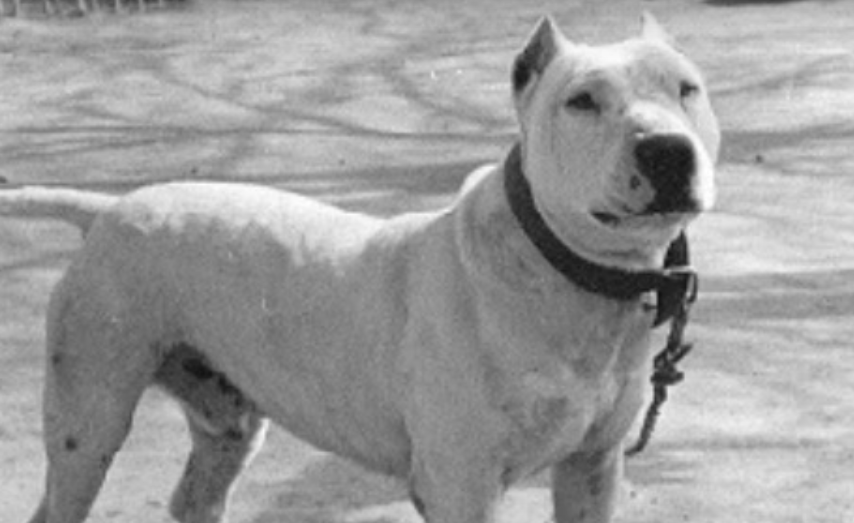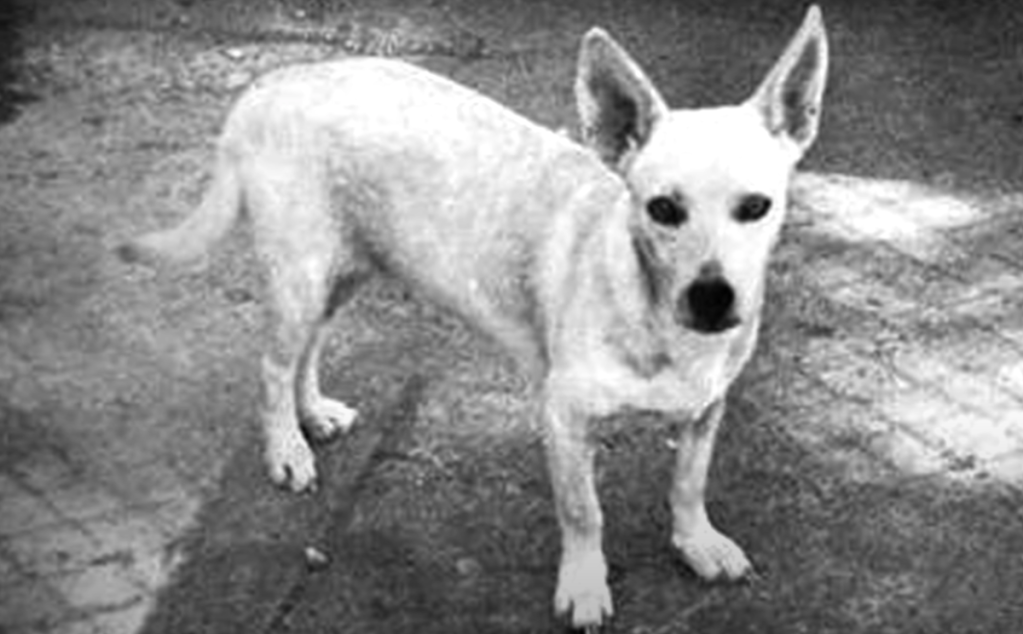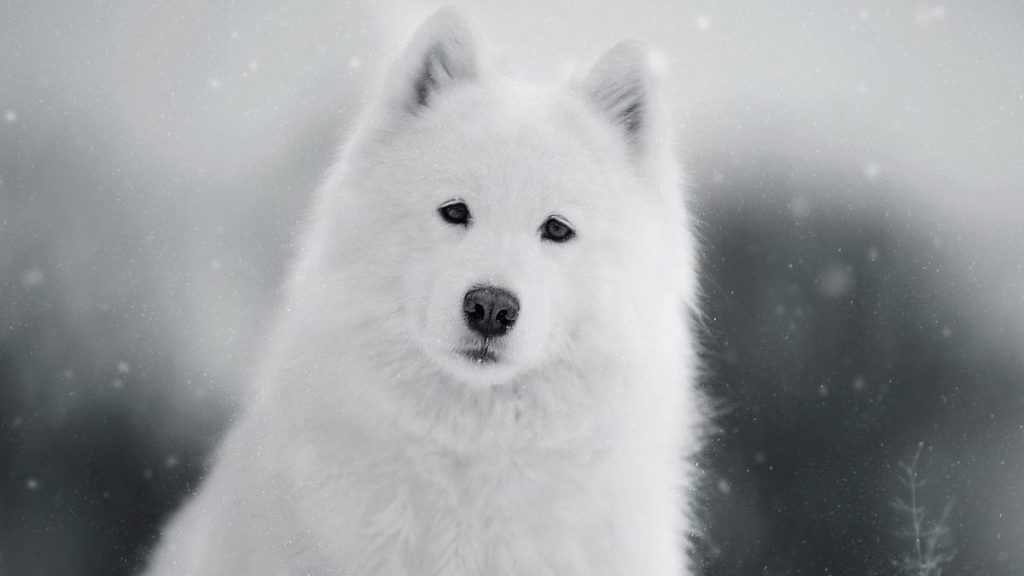When you picture your favorite dogs, like the sunny Golden Retriever, the spunky Beagle, or the lovable American Pit Bull Terrier, chances are you don’t spend much time thinking about their canine family tree. Just like humans, these beloved breeds came from somewhere and certainly have a unique story. Unfortunately, some breeds of dogs, even close ancestors of our modern-day favorites, are no longer around. Various reasons — from war and disease to natural evolution — played a part in their disappearance. Here are ten incredible but extinct dog breeds we wish we could meet.
Talbot Hound
With origins evidenced in medieval tapestries, literature, and paintings, the Talbot Hound was a breed valued for their hunting abilities. However, whether these dogs were sighthounds, scent hounds, or quarry hounds is unclear. “Talbot” wasn’t merely a breed name, but referred to an individual hound of noble lineage and distinct appearance. These short, stocky dogs boasted a sleek white coat and a proudly curled tail. Hailing from Normandy, they became widely revered in England, frequently found as companions and hunting dogs. Though the purebred Talbot sadly vanished in the late 18th century, their legacy lives on in their presumed descendants, the Beagle and Bloodhound.
St. John’s Water Dog
Many contemporary water retrievers, including the Newfoundland, Curly-Coated Retriever, and Labrador Retriever, trace their ancestry back to the St. John’s Dog of Newfoundland. These dogs, created through a blend of local breeds and water dogs introduced by Portuguese fishermen, captured the attention of British hunters. Seeking to enhance their water-retrieving capabilities, the British imported St. John’s dogs to England. Eventually, the breed seamlessly merged into the development of other retriever breeds. The breed itself, however, was lost to evolution.
Fighting Dog of Cordoba

The Fighting Dog of Cordoba, also known as the Cordoba Fighting Dog or Perro de Pelea Cordobes, was a breed originating from Argentina. Tragically developed for dog-fighting purposes, breeders prized this formidable canine for their tenacity, strength, and aggressive nature in the fighting arena. However, the public perception of dog fighting shifted in the mid-20th century. In a 1954 animal rights victory, the Argentinian government outlawed the practice of dog fighting. As a result of the ban and economic conditions of the time, the Cordoba Fighting Dog population faced a decline, ultimately leading to the breed’s extinction.
Molossus
Originally believed to have been introduced to the Mediterranean Peninsula by the Phoenicians, the Molossus gained favor among the Ancient Greeks and Romans for their fierce nature and exceptional hunting skills. Alternatively, some theories suggest Alexander the Great transported these dogs from conquered Asian lands to Ancient Greece. As the Molossaian dogs dispersed across different regions, new breeds emerged to fulfill distinct needs and preferences. Many of the most beloved breeds, like the Saint Bernard, Great Dane, and Bernese Mountain Dog, share this common relative.
Salish Wool dog
Highly valued by the Salish Coast Native American tribes for their fur, these small, Spitz-like dogs were deliberately kept apart from other village dogs to safeguard their distinctive white coat. The Salish people of the Pacific Northwest, renowned for their weaving abilities, did not raise sheep. Instead, the tribe sheared these prized dogs and spun the fibers to create ceremonial blankets. Unfortunately, the introduction of Hudson Bay trade blankets, affordable sheep wool, and colonialism contributed to the eventual disappearance of these extinct Woolly dogs.
Hawaiian Poi Dog

The Hawaiian Poi Dog — a small-statured, potbelly dog with a colorful coat — was believed to have arrived in Hawaii with the Polynesians over a thousand years ago. This dog was also loved for their sweet disposition and compatibility with children. Despite their amiable nature, the Hawaiian Poi Dog also served as a food source. The introduction of other dog breeds to the area led to the extinction of the Hawaiian Poi Dog in the early nineteenth century, likely due to interbreeding. In the 1970s, a breeding program at the Honolulu Zoo attempted to bring back the extinct Polynesian pup.
Alpine Mastiff
The Alpine Mastiff, a massive breed dating back to 500 BC in Northern Europe, is considered one of the earliest giant-sized dogs. Possibly a precursor to the English Mastiff, this Mastiff breed could grow to reach over 39 inches at the shoulder and weigh up to a whopping 350 pounds! Over the years, this breed merged with other Molosser breeds. As such, the Alpine Mastiff is now considered extinct as the breed is no longer present in their pure form. The closest modern relative of this breed is likely the Saint Bernard.
Brazilian Tracker
Recognized by the Brazilian Kennel Club in 1967, the Brazilian Tracker went extinct only six years after their official recognition. The outbreak of disease and an overdose of insecticides contributed significantly to the hunting breed’s decline and eventual extinction. The Brazilian Tracker, also known as the Rastreador Brasileiro, was known for their tracking abilities. Similar in temperament and ability to the American Coonhound, the Brazilian Tracker was once a popular breed in Brazil. Recent efforts have been made to recreate the breed through preservation breeding.
Argentine Polar Dog
Originally bred by the Argentine Army for use as sled dogs in Antarctica, the Argentine Polar Dog was a long-haired dog breed who went extinct in 1994. As a result of the Antarctic Treaty‘s policies on exotic species, Argentina removed all dogs from the continent. Subsequently, the army ended their breeding program and relocated the remaining dogs to Patagonia. As a result of their isolation in Antarctica, the breed lost natural immunity to several canine diseases. Unfortunately, most died due to contracted illnesses.
Tesem
An ancient breed, the Tesem’s roots can be traced back to Ancient Egypt. Ancient Egyptians revered this breed for their hunting prowess and loyalty. Artwork from the period depicts this iconic medium-sized dog gracing the walls of temples and tombs. Among the earliest documented instances of the Tesem is the “Khufu dog” discovered in the tomb of Pharaoh Khufu, who ruled between 2609 and 2584 BC. Characterized by a wedge-shaped head, erect ears, curled tail, and a sleek, muscular body, the Tesem eventually evolved into other breeds. The Saluki and Sloughi are two modern relatives of this noble sighthound.
Highly vulnerable breeds facing extinction
Thanks to the work of breed preservationists, dogs who may have disappeared in the past remain today’s cherished companions. Despite these efforts, many dog breeds still face the threat of extinction and are considered highly vulnerable. To learn more about ways to help other vulnerable dogs, review our resources on volunteering, fostering, and advocating for banned dog breeds.











